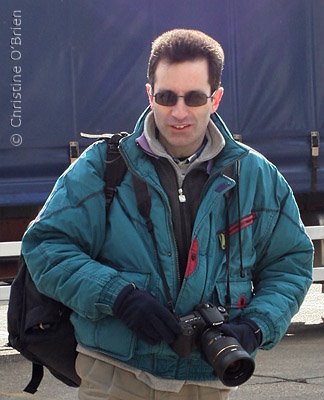Getting the most from your lenses

Do you fancy upgrading some or all of your lenses? Have you been coveting one of those "top of the range" lenses that you've seen advertised? Buying this type of lens will usually result in an improvement in image quality (note the use of the word "usually"), but are you getting the best from what you have, and is your technique up to those better lenses. I read some time ago the opinion that most lenses are better than most photographers. The point being that we tend to concentrate on trying to buy our way to better images rather than learning to do better with the equipment we have. It could be that improving technique could result in as much of an improvement as paying large amounts of money for better glass. Even if you decide to go ahead with the purchase, at least you will be harvesting the greatest reward from your investment.
So here are a few ways of getting better images from the lenses that you have. First, use a tripod whenever possible. I mean a good one with little or no plastic (you may recall my previous rant on this subject).
In high winds wrap the camera strap round the tripod (or tape it up) to stop it swinging around in the draft. If you can stand up-wind of the camera to act as a windbreak without turning the shot into a self-portrait, do so. Do everything you can to keep the tripod solid. On soft ground you may need to find large flat stones (if possible) or similar to put under the feet. Sometimes hanging your camera bag from the tripod will help.
Use a cable release (remote shutter release) or the camera's self-timer. Removing the movement and vibration caused by you operating the shutter release directly will give sharper images at all but the fastest shutter speeds.
Use mirror lock-up (if available on your camera - only for SLR users). The reason is the same as for the previous point. To have a piece of glass flapping around inside the camera fractions of a second before taking the image is not a great idea.
If your lens has image stabilisation use it, assuming that it is the later kind that does not get freaked out by being used tripod-mounted.
If there is no reason not to, use the lens at it's best aperture (your subject may dictate otherwise). If you have taken test shots at different apertures (with zooms, at different focal lengths also) you will have an idea where that is. Most lenses perform at or near their best stopped down a couple of stops from wide open, but don't take my word for it. Check for yourself.
Do all the stuff that I talked about in my piece on flare - make sure the lens is clean, use a lens hood etc.
The last point may seem too obvious for words. Focus carefully. Try this. Focus on something. If your lens has a distance scale check exactly where it is focussed. Focus again. Check the scale again, and there is a very good chance that the scale will be in a slightly different place. I remember trying this with a manual focus lens and marking the focussing ring with a soft pencil. I tried it about five times. I had five marks on the lens, all very close, some touching, but not in exactly the same place.
If you can't use a tripod (street photography for instance) and therefore can't use mirror-lockup or a remote shutter release do everything you can to make yourself as stable as possible. Support the lens with the left hand, keep elbows tucked in to your body as much as possible. If you can, lean against something like a lamp post or wall. Using a monopod may be an option worth considering if a tripod is out of the question.
Keep in mind that most of these points apply much more to the use of long focal length lenses than to wide angle ones.
Image: Norway 2005

2 Comments:
Wow, I am amazed at the colours of the water. Very amazed. Beautiful shot. Great composition.
Thanks for your very kind comments. It's great to have feedback. Best wishes.
John
Post a Comment
<< Home